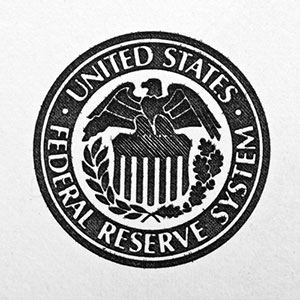 The FOMC meeting announcement was just released following the two-day December Fed meeting. Here's what we know so far...
The FOMC meeting announcement was just released following the two-day December Fed meeting. Here's what we know so far...
- As widely expected, the Fed raised its benchmark lending rate 0.25% to a new range of 0.50% to 0.75%. That makes a new midpoint of 0.625%. Market odds heading into today's FOMC meeting announcement were 95%, according to CME Group's FedWatch Tool.
- The Fed says the labor market has continued to strengthen, but it doesn't expect much more improvement. The unemployment rate currently sits at a nine-year low of 4.6%.
- Household spending has been rising moderately, but business-fixed investment has remained soft, according to officials.
- Inflation has increased since earlier this year but is still below the committee's 2% longer-run objective. That partly reflects earlier declines in energy prices and in prices of non-energy imports.
- Market-based measures of inflation have climbed considerably but still are low. Most survey-based measures of longer-term inflation expectations are little changed, on balance, in recent months.
- The FOMC expects that economic conditions will evolve in a manner that will warrant only gradual increases in the federal funds rate. The federal funds rate is likely to remain, for some time, below levels that are expected to prevail in the longer run.
- The Fed is projecting three interest rate hikes in 2017, with the average rate expectation at 1.37%.
Fed Chair Janet Yellen followed the FOMC meeting announcement with a press conference at 2:30 p.m. Her comments will be picked-after over the next four weeks for clues on when we might see the next rate hike.
Up Next: Get the Best Investing Research Today to Grow Your Money
Here's when investors can expect the next Fed rate hike in 2017...
FOMC Meeting Announcement Hints at Next Fed Rate Hike
[mmpazkzone name="in-story" network="9794" site="307044" id="137008" type="4"]
The Fed's most recent summary of economic projections, released prior to the Nov. 8 election, suggested officials had planned for two rate increases next year. Fed funds futures suggest another hike by mid-2017.
Some economists are calling for as many as four rate increases next year. Others say the Fed is likely to maintain its current pace. Currently, markets are betting on the first 2017 hike to come in June.
Still, many things could trip up those projections and the Fed's future moves. When the central bank last raised rates in December 2015 for the first time since 2006, policymakers were forecasting four rate hikes in 2016. We got one... today's.
So these forecasts are sometimes nothing more than calculated guesses.
A great deal of uncertainty looms with a new president, new administration, and new agenda that could speed up or slow down the Fed's interest rate trajectory.
President-elect Donald Trump aims to cut taxes, boost infrastructure spending, and relax banking regulation. Those ambitious plans are expected to spur growth and inflation. In turn, a more robust Fed interest rate pace is anticipated.
Markets have rallied since Trump's victory. The Dow, S&P 500, and the Nasdaq Composite all closed at records Tuesday. That marked the sixth such trifecta since Election Day.
But right now, they are all just plans.
Without question, the Fed has a lot of room to raise interest rates. And it wants to...
Yellen telegraphed her desire to raise interest rates in August at a Jackson Hole conference. In her speech, Yellen noted that in response to the most recent nine recessions, "the FOMC cut the federal fund rate by amounts ranging from about 35% to 10%."
The Fed chair is likely getting anxious about the next recession. One is coming; the question is when.
It has been seven years since the last U.S. recession. Since World War II, recessions have hit about once every six years.
If the next recession arrives any time soon, the Fed will be powerless to implement its go-to response of aggressively cutting interest rates. Interest rates hover near zero. That doesn't give the Fed a great deal of wiggle room, unless it goes the way of European counterparts and goes negative...
Editor's Note: Timing is everything when it comes to making money in markets - and this new, free service we created puts timing on your side...
Follow us on Twitter @moneymorning and like us on Facebook.
Related Articles:
- CME Group: FedWatch Tool
- The Wall Street Journal: Fed Expected to Raise Interest Rates: What to Watch
- FOMC: Meetings and Minutes


